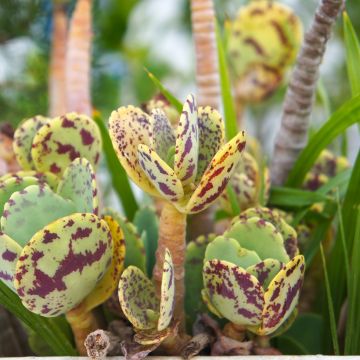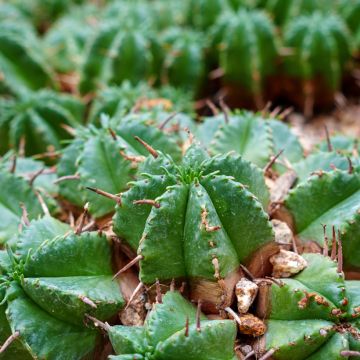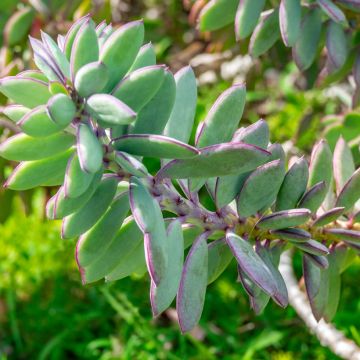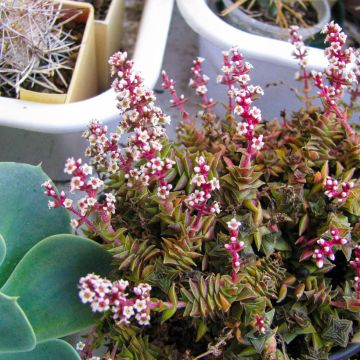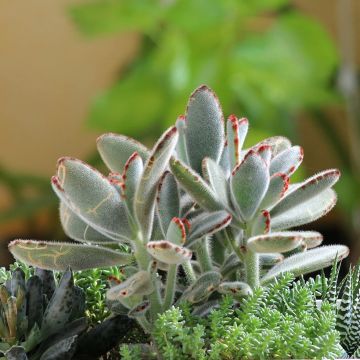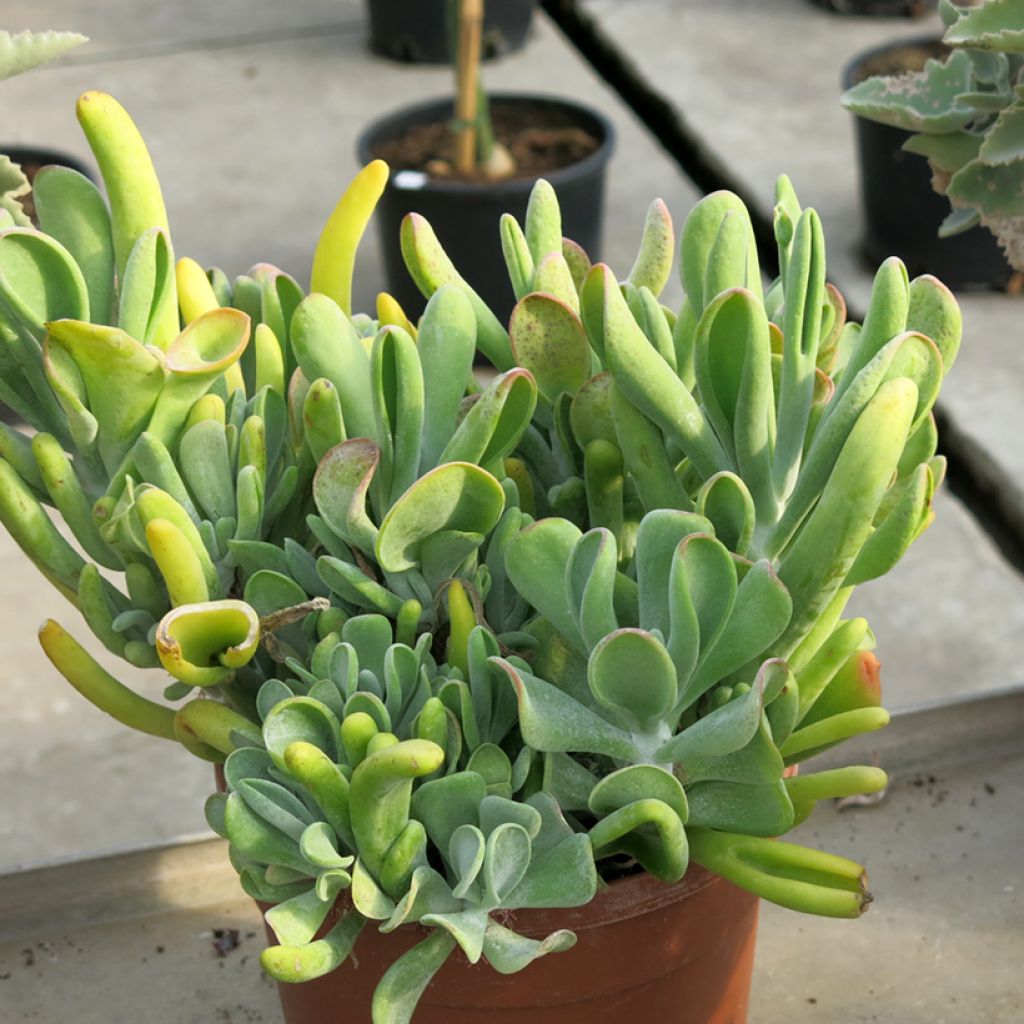

Kalanchoe luciae Oricula
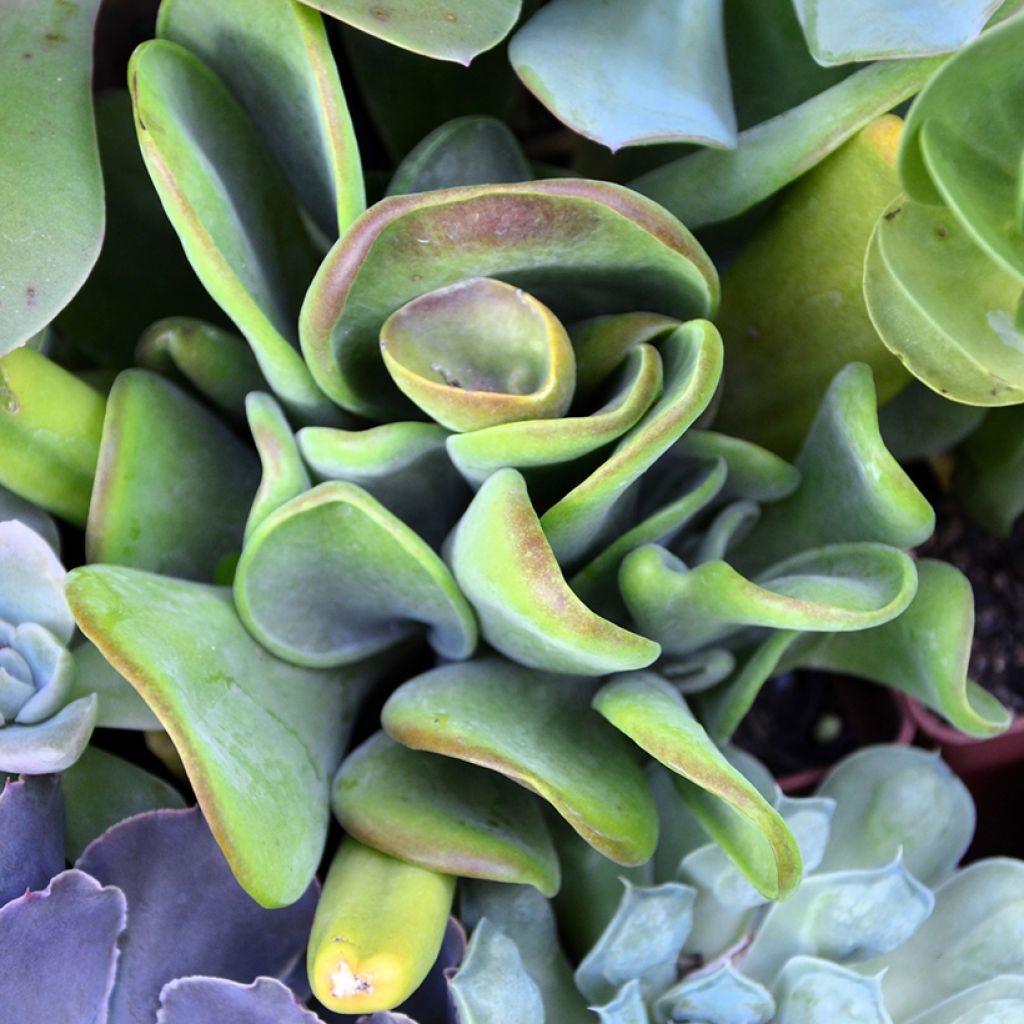

Kalanchoe luciae Oricula
Kalanchoe luciae Oricula
Kalanchoe luciae Oricula
Desert cabbage, flapjack, red pancakes
Why not try an alternative variety in stock?
View all →This plant carries a 30 days recovery warranty
More information
We guarantee the quality of our plants for a full growing cycle, and will replace at our expense any plant that fails to recover under normal climatic and planting conditions.
From 7,90 € for pickup delivery and 6,90 € for home delivery
Express home delivery from 8,90 €.
Description
Kalanchoe 'Oricula' is an undemanding, colourful and decorative succulent plant. This variety boasts thick, fleshy leaves in shades of greyish-green to yellow-green, with reddish edges. The leaves have an unusual shape with slightly incurved edges. Depending on sun exposure, the red colouring of the edges may intensify, adding a vibrant touch to the whole plant. Indoors, this succulent takes up little space. It is therefore perfect for growing in small flats.
Belonging to the Crassulaceae family, Kalanchoe luciae 'Oricula' is a natural mutation of Kalanchoe luciae, native to southern Africa, particularly South Africa, Zimbabwe and Mozambique. In its natural habitat, the species grows on granite outcrops in savannas and wooded areas. The 'Oricula' variety develops thick leaves, arranged in a basal rosette, measuring between 15 and 20 cm long and 8 to 10 cm wide. The leaves are opposite, sessile, with a smooth texture and incurved edges. These astonishing leaves have a greyish-green colour that can turn reddish under strong light. Flowering is rare indoors and occurs in spring in the form of terminal inflorescences composed of small tubular flowers in white to cream hues. This plant is semelparous, meaning the rosette dies after flowering, but it usually produces offsets near its crown which will ensure its progeny.
Kalanchoe luciae 'Oricula' is an easy-to-grow succulent plant, well suited to indoor cultivation, which will enjoy being moved to a bright balcony in summer. It requires a very bright position, with a few hours of direct sunlight each day to intensify its foliage colours. A well-draining substrate is essential to avoid excess moisture: a mix of cactus compost, coarse sand and perlite. Water moderately, ensuring the substrate is completely dry before watering again. In winter, the plant enters a dormant period, and watering should be reduced to a bare minimum. Ideal temperatures for its growth are between 18 and 25°C, but it can tolerate drops to 5°C, as long as the substrate remains dry.
This succulent fits perfectly into xerophytic plant compositions. It pairs well with other Crassulaceae such as Echeveria, Sedum or Graptopetalum, and columnar cacti like Cereus peruvianus to mix shapes and textures. It can also be combined with Sansevieria or Aloe, for an elegant and low-maintenance composition. A terracotta container will aid drainage and limit the risk of root rot.
Report an error about the product description
Kalanchoe luciae Oricula in pictures


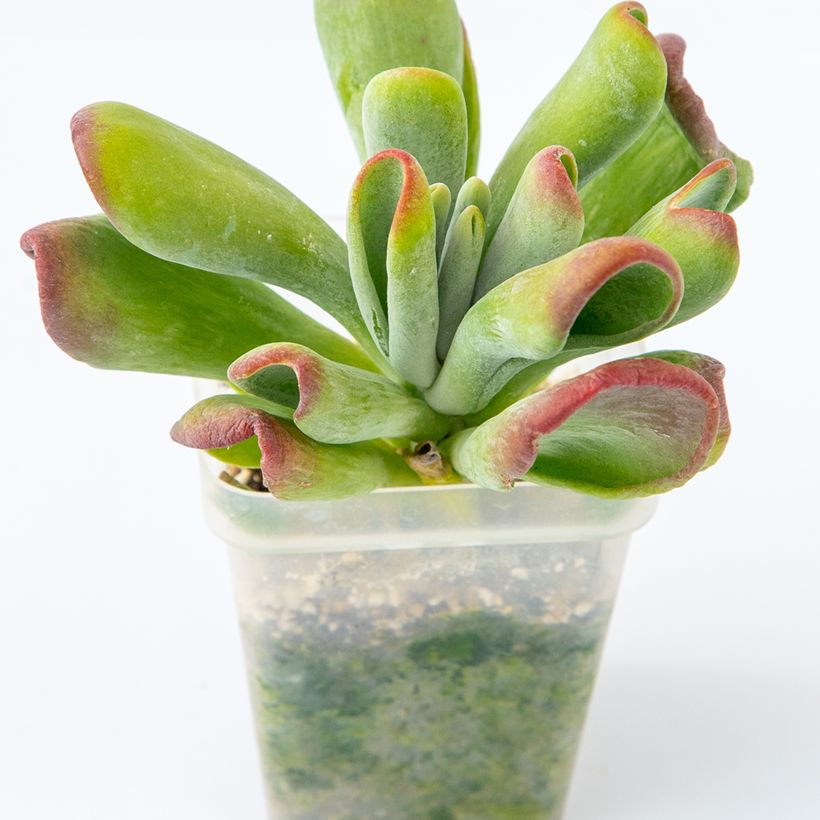

Foliage
Plant habit
Flowering
Botanical data
Kalanchoe
luciae
Oricula
Crassulaceae
Desert cabbage, flapjack, red pancakes
South Africa
Other Kalanchoe
View all →Location
Location
Maintenance and care
Potting advice, substrates and fertilisers
Disease and pest advice
Maintenance and care
This item has not been reviewed yet - be the first to leave a review about it.
Haven't found what you were looking for?
Hardiness is the lowest winter temperature a plant can endure without suffering serious damage or even dying. However, hardiness is affected by location (a sheltered area, such as a patio), protection (winter cover) and soil type (hardiness is improved by well-drained soil).

Photo Sharing Terms & Conditions
In order to encourage gardeners to interact and share their experiences, Promesse de fleurs offers various media enabling content to be uploaded onto its Site - in particular via the ‘Photo sharing’ module.
The User agrees to refrain from:
- Posting any content that is illegal, prejudicial, insulting, racist, inciteful to hatred, revisionist, contrary to public decency, that infringes on privacy or on the privacy rights of third parties, in particular the publicity rights of persons and goods, intellectual property rights, or the right to privacy.
- Submitting content on behalf of a third party;
- Impersonate the identity of a third party and/or publish any personal information about a third party;
In general, the User undertakes to refrain from any unethical behaviour.
All Content (in particular text, comments, files, images, photos, videos, creative works, etc.), which may be subject to property or intellectual property rights, image or other private rights, shall remain the property of the User, subject to the limited rights granted by the terms of the licence granted by Promesse de fleurs as stated below. Users are at liberty to publish or not to publish such Content on the Site, notably via the ‘Photo Sharing’ facility, and accept that this Content shall be made public and freely accessible, notably on the Internet.
Users further acknowledge, undertake to have ,and guarantee that they hold all necessary rights and permissions to publish such material on the Site, in particular with regard to the legislation in force pertaining to any privacy, property, intellectual property, image, or contractual rights, or rights of any other nature. By publishing such Content on the Site, Users acknowledge accepting full liability as publishers of the Content within the meaning of the law, and grant Promesse de fleurs, free of charge, an inclusive, worldwide licence for the said Content for the entire duration of its publication, including all reproduction, representation, up/downloading, displaying, performing, transmission, and storage rights.
Users also grant permission for their name to be linked to the Content and accept that this link may not always be made available.
By engaging in posting material, Users consent to their Content becoming automatically accessible on the Internet, in particular on other sites and/or blogs and/or web pages of the Promesse de fleurs site, including in particular social pages and the Promesse de fleurs catalogue.
Users may secure the removal of entrusted content free of charge by issuing a simple request via our contact form.
The flowering period indicated on our website applies to countries and regions located in USDA zone 8 (France, the United Kingdom, Ireland, the Netherlands, etc.)
It will vary according to where you live:
- In zones 9 to 10 (Italy, Spain, Greece, etc.), flowering will occur about 2 to 4 weeks earlier.
- In zones 6 to 7 (Germany, Poland, Slovenia, and lower mountainous regions), flowering will be delayed by 2 to 3 weeks.
- In zone 5 (Central Europe, Scandinavia), blooming will be delayed by 3 to 5 weeks.
In temperate climates, pruning of spring-flowering shrubs (forsythia, spireas, etc.) should be done just after flowering.
Pruning of summer-flowering shrubs (Indian Lilac, Perovskia, etc.) can be done in winter or spring.
In cold regions as well as with frost-sensitive plants, avoid pruning too early when severe frosts may still occur.
The planting period indicated on our website applies to countries and regions located in USDA zone 8 (France, United Kingdom, Ireland, Netherlands).
It will vary according to where you live:
- In Mediterranean zones (Marseille, Madrid, Milan, etc.), autumn and winter are the best planting periods.
- In continental zones (Strasbourg, Munich, Vienna, etc.), delay planting by 2 to 3 weeks in spring and bring it forward by 2 to 4 weeks in autumn.
- In mountainous regions (the Alps, Pyrenees, Carpathians, etc.), it is best to plant in late spring (May-June) or late summer (August-September).
The harvesting period indicated on our website applies to countries and regions in USDA zone 8 (France, England, Ireland, the Netherlands).
In colder areas (Scandinavia, Poland, Austria...) fruit and vegetable harvests are likely to be delayed by 3-4 weeks.
In warmer areas (Italy, Spain, Greece, etc.), harvesting will probably take place earlier, depending on weather conditions.
The sowing periods indicated on our website apply to countries and regions within USDA Zone 8 (France, UK, Ireland, Netherlands).
In colder areas (Scandinavia, Poland, Austria...), delay any outdoor sowing by 3-4 weeks, or sow under glass.
In warmer climes (Italy, Spain, Greece, etc.), bring outdoor sowing forward by a few weeks.


































